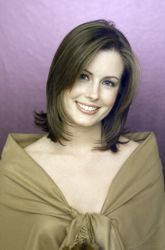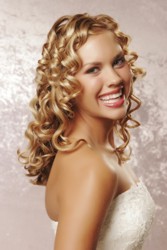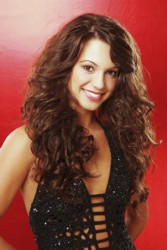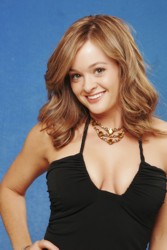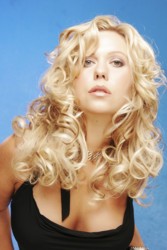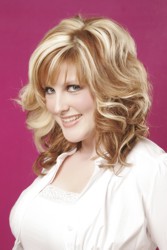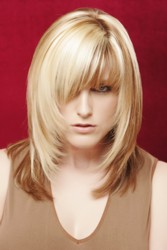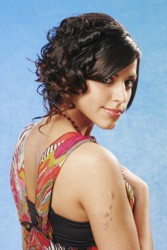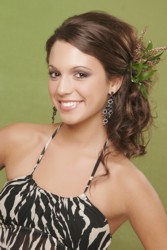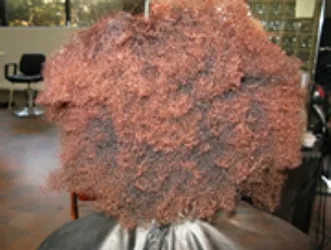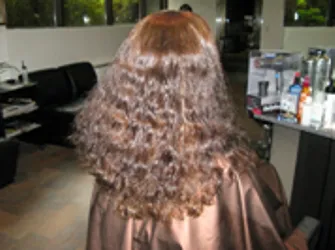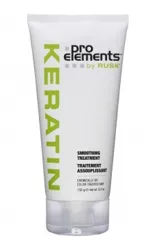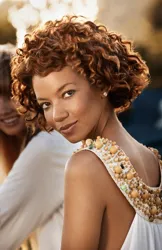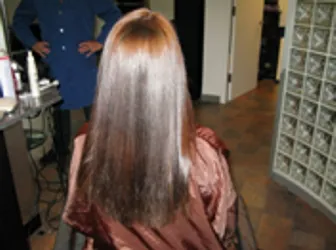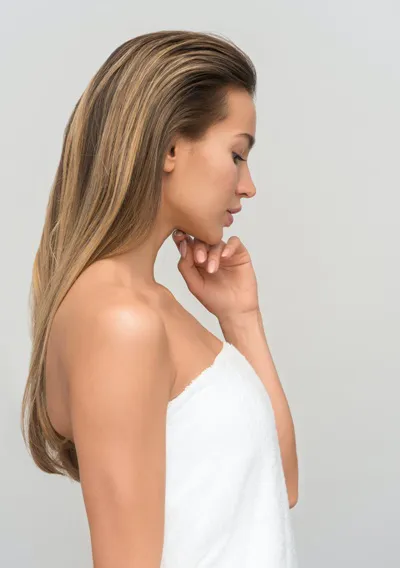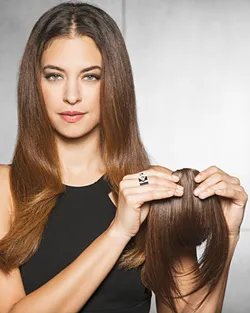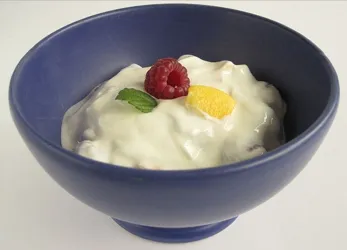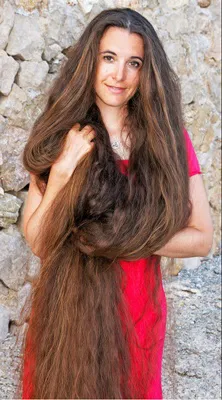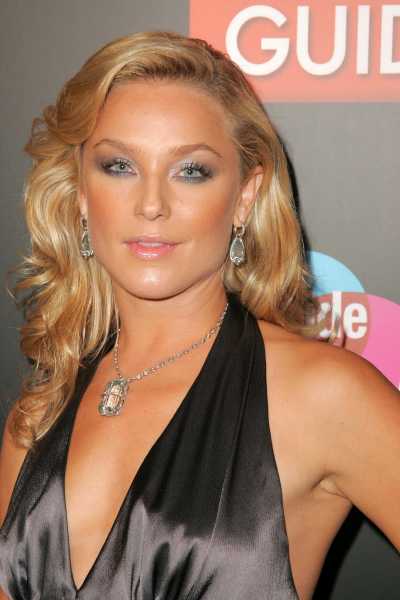
Rusk Str8 Secrets
Introduction
Depending on what hair expert you talk to hair consumers are going crazy for new chemical straightening systems. Other experts swear consumers are embracing their natural textures. Which group of hair experts is correct? Both. Ultimately consumers are searching for ways to have great looking strands on a budget. Some have decided to embrace their natural texture in the form of waves and curls which translates into dumping costly weekly blowouts. They are also letting their curls go au natural which results in less product use and minimal hot iron time. Permanent Straightening TreatmentsOther consumers are flocking to salons for the latest permanent straightening treatments because for that groups it essentially offers the same options as going au natural. When hair is chemically straightened it dries straight (in most cases) and eliminates trips to the salon for those weekly styling sessions. Don't get me wrong. I believe every hair consumer should embrace whatever hairstyle they feel most comfortable wearing. Whether naturally textured folks go natural or chemically altered is totally up to them and their own needs. I would be the last person to recommend any course of action. However, I am in the first group to provide as much information as possible to help make informed decisions. With this goal in mind, I recently attended a four hour Rusk Str8 training session. It was fantastic and the trainers were over the top. The course actually involved taking a young Hispanic model with lots of waves and curls to stick straight in a matter of four hours. I sat mesmerized and watched every detailed step. I came away from the training course in total awe of Rusk. They have done an amazing job of offering a permanent chemical straightening process that, when done correctly, has minimal risk to the client's hair. No, it's not inexpensive or even quick. But it works and offers spectacular thermal reconditioning results. History of Rusk's Str8
The original Rusk Str8 formula has been around for years. Rusk is known in the hair industry as always being leading edge with their product lines. Indeed, when the Japanese Straightening Movement (think Yuko) first landed in the United States, Rusk was quick to provide their own solution with Rusk Str8. Recently permanent chemical straightening, also known as thermal reconditioning, has enjoyed a resurgence with the Brazilian thermal restructuring method. The Brazilian method's popularity was short circuited when studies determined that the Brazilian's use of formaldehyde offered toxicity concerns for both the hairdressers and their clients. In response to the Formaldehyde issues, new and improved systems were introduced, specifically a permanent straightening system that advertised no formaldehyde but the infusion of hair building Keratin. Reformulation of Rusk's Str8Rusk stepped up to the plate and completely reformulated the original Str8 formula infusing the chemical service with Keratin and lots of other hair building ingredients. The new Str8 is Rusk's answer to the new Keratin straightening/reformulation systems. It is certified as Formaldehyde-Free and deeply conditions with Keratin. The new Rusk Str8 is officially known as Rusk Thermal Shiny Str8™ and is available in the following two formulas:
Each option is divided into two parts. The ingredients for Normal/Tinted include: Part I - Water (Aqua, Eau), Ammonium Thioglycolate, Cetearyl Alcohol, Diammonium Dithiodiglycolate, Laureth-23, Mineral Oil (Huile Minerale, Paraffinum Liquidum), Pentasodium Pentetate, Ammonium Hydroxide, Sodium Lauryl Sulfate, Hydrolyzed Corn Protein, Hydrolyzed Wheat Protein, Hydrolyzed Soy Protein, Fragrance (Parfum), Benzyl Salicylate, Hexyl Cinnamal, Linalool. Part II - Water Aqua, Eau), Hydrogen Peroxide, Cetearyl Alcohol, Olealkonium Chloride, Mineral Oil (Huile Minerale, Paraffinum Liquidum), Ceteth-20, Sodium Lauryl Sulfate, Methy Paraben, Phoshoric Acid, Disodium Phosphate. Ingredients of Rusk's Str8Rusk stepped up to the plate and completely reformulated the original Str8 formula infusing the chemical service with Keratin and lots of other hair building ingredients. The new Str8 is Rusk's answer to the new Keratin straightening/reformulation systems.
Starting At The Beginning - Most Viable Candidates
The Rusk trainers provided us with detailed information on which hair clients are viable candidates for the Rusk Str8 treatment and which ones are not. The Str8 system is designed to be used by professional hairdressers for their clients. Rusk never recommends this product, or any of their other chemical products be used by consumers. After going through the steps, I find it hard to imagine doing this chemical straightening service without an assistant. It is very time consuming and can take 4-8 hours depending on the length, thickness and texture of the Str8 client. Profiling Prospective Client's Hair HistoryRusk recommends that any professional hair dresser providing the Str8 Service meet with the prospective client at least 24 hours before the service to discuss the following items: 1. What is the client's hair history? Has the client had their hair chemically treated in the past 12 months? What were the nature of the chemicals? Str8 can be applied to hair. A professional hair stylist that who is well versed in chemical straightening will always do a strand test on any hair that is to be treated. A strand test is an absolute must to be sure your hair can withstand chemical processing without any reverse reactions. This not only protects the client's hair but helps the stylist determine the best type of formula to use, whether to use a conditioner-filler on the hair before applying the chemicals and whether a base petroleum protection layer is needed or not. A strand test can be done in a variety of ways which include: 1. Pulling the hair to determines its degree of elasticity. 2. Applying a small amount of relaxer to determine the hair reactions to the chemicals. 3. A finger test. Products Used During Chemical Hair RelaxingThe following products are generally used in chemical hair relaxing procedures:
There are three basic steps that are performed during a hair relaxing process. The steps generally include the following: 1. A protective petroleum cream may or may not be applied as protection to the scalp & previously relaxed or damaged hair. A chemical hair relaxing formula is applied to soften, loosen and relax the natural curls.
2. After the hair has "cooked" or been processed for the appropriate time limits, the chemicals are completely rinsed from the hair with warm water. A neutralizing formula is then applied to the hair. The neutralization process oxidizes and restores the hair's pH because a high pH, as a result of the relaxing, can cause the hair to swell and break. 3. A conditioner is applied to the hair. Depending on the condition of the hair to be relaxed, the conditioner may be applied before the relaxing formula, after or sometimes it may even be applied before and after. Two types of conditions are available. These include the cream conditioners and the protein or liquid conditioners. Overly curly hair that contains damage from ongoing use of heat appliances or other chemicals may need to be conditioned before relaxer can be applied. In the case where the hair is severely damaged, it may be best not to apply a chemical relaxer until the hair has had a chance to recover. In other cases a conditioner-filler is required before the chemical relaxer can be applied to dry hair. These fillers protect hair that may be overly porous or hair that is slightly damaged from being over-processed. Sodium Hydroxide, Guanidine Hydroxide & Ammonium ThioglycolateThere are three basic types of hair relaxers. These are sodium hydroxide and guanidine hydroxide which may or may not require pre-shampooing, and ammonium thioglycolate, which may require a pre-shampooing. Sodium Hydroxide
Sodium hydroxide is the strongest of the three relaxers and will provide the most dramatic results. Sodium hydroxide is a caustic type of chemical that actually softens hair fibers. The chemical also causes the hair to swell at the same time. As the sodium hydroxide solution is applied to the hair, it penetrates into the cortical layer and breaks the cross-bonds. The cortical layer is actually the middle or inner layer of the hair shaft that provides the strength, elasticity and shape of the curly hair. Depending on various factors and the condition of the hair to be straightened, the strength of the sodium hydroxide solution may vary anywhere from 5 to 10 percent. The pH faction may vary from 10 to 14. The higher the strength of sodium hydroxide, the higher the pH and the faster the straightening solution will take hold. Also, the stronger the solution, the more potential damage can occur to the hair. Sodium hydroxide contains a high alkaline content and so special care should always be used when applying this chemical. Guanidine HydroxideGuanidine hydroxide relaxers are referred to as the "no-lye" relaxers and they tend to be less damaging than sodium hydroxide relaxers. These products, however, still may do some damage to the hair. It can definitely de-fat the scalp. Guanidine hydroxide relaxers usually require conditioning treatments before and after. These relaxers are a mixture of calcium hydroxide cream with guanidine carbonate "activator" solution. Ammonium ThioglycolateAmmonium thioglycolate (nicknamed "thio relaxer") is much less drastic in its action than the sodium hydroxide and even, in some cases, the guanidine hydroxide. It acts a little differently by softening and relaxing overly curly hair through changes to the hair's cystine linkage. Thio works on the same formulation principles as thioglycolate permanent waves. With a pH of 9-9.5, these are also considered to be less damaging, yet still require a neutralization step. Thioglycolate relaxers are usually in cream or gel form and can be preceded by a pre-softener. Since thio relaxers are considered much milder, the risk of hair damage is also reduced by comparison to the sodium hydroxide. Petroleum Cream/Base Cream
A protective base of petroleum cream is usually applied to the scalp and other areas of the hair that have been previously straightened to prevent over processing, hair breakage or burning and/or irritation of the scalp and skin. The protective base is applied freely to the entire scalp with the fingers. The hairline around the forehead, nape of the neck and over and under the ears must be completely covered. The base should actually lay on the scalp and should not be spread or rubbed into the skin or scalp. The relaxer formula must never come in contact with sores or abrasions on the scalp of the skin and should never make contact with the eyes. The cream that is used as a base for relaxing is lighter than regular petroleum jelly and is designed to melt at body temperatures. As the cream melts is provides a complete protective covering over the scalp and other desired areas with a oily film. This film acts as a barrier against the straightening chemicals. Some relaxing solutions are mild enough that they do not require the protective petroleum base application. The petroleum creme may or may not be required for the thio type of softening process. However, it would be more likely required for sodium hydroxide relaxing treatments. Whether a relaxing formula requires the petroleum cream or not, it is always best to use a protective cream around the hairline and over the delicate ear areas. It is also best to apply a base during any chemical "retouching". It is advisable not to reapply a straightening formula to hair that has been previously straightened since there is a high risk of breakage or damage. How The Chemical Is AppliedThe stylist will use their hands or some other appropriate straightening tools to distribute the chemical solution onto completely dry hair (if the Thio Relaxer is applied the hair may be wet). If the hair has any moisture or perspiration, it must be dried first before applying the relaxing solution (if not the Thio Relaxer). Then the solution will be carefully combed through the hair and the hair will be pulled straight. The relaxing solution is harsh and will be only left on for a few minutes (average time is 5-8 minutes but will vary depending on a variety of factors). The longer the relaxing solution is left on, the longer the effects will last and the straighter the hair will be. However, the longer the solution is left on, the more risk there is of damage to the hair. Avoid combing through your hair while it is being straightened. The straightening process affects the hair's natural elasticity. When it is combed out, it may stretch out to over twice its normal length and it is very fragile and easy to break. Neutralizer
After the relaxer is completely shampooed and rinsed out with warm water (it can not be hot or cold and must be warm) a neutralizer solution is added to halt the relaxing process and restore the pH balance to the hair. The neutralizer is also known as a stabilizer or fixative. The neutralizer for a thio type of relaxer will actually re-form the cysteine cross-bonds in their new position and rehardens the hair. From the time that the relaxing chemicals is removed and the hair is shampooed and than stabilized, the hair is extremely fragile and should be handled carefully. Sometimes the chemicals will leave a reddish cast on the hair. When this happens the stylist can apply a special color rinse to remove the red cast. Sometimes this cast is not evident until the hair has been dried. The color rinse may be applied to dry hair as well. Conditioned, Dried & SetIt is advisable to use a good conditioner to restore some of the natural oils that have been removed by the chemicals. The conditioner is applied after the neutralizer is rinsed out and after the hair is first towel dried. After the conditioner is applied, the hair can be set in rollers and gently dried or styled and air dried. Post Relaxing Treatment
Once hair has been relaxed it will require special ongoing treatment to protect the hair and maintain the effects of the straightening. If the newly relaxed hair is not treated with special care it can become brittle and stiff and "see through". Relaxed hair is more porous and tends to hold on to dulling residue. Therefore it is very important to rinse out shampoo and other hair products thoroughly. Relaxed hair will also break more easily. Use a good detangling/ leave in conditioning product like Phytologie #7 (or the slightly heavier Phyto 9) and a wide pick with smooth teeth to detangle wet hair. Work from the bottom of your hair up towards the roots. Take your time and be very gentle. Regular deep conditioning is a must on hair that is chemically relaxed. Plan on doing a deep conditioning treatment once or twice a week and more if your hair needs it. You can use a high quality deep conditioning treatment like PhytoKarite deep conditioning intensive treatment mask, Phytologie's Phytocitrus Mask, Huile D' Ales, Aveda's Curessence or Deep Penetrating Hair Revitalizer, Aveda's Beautifying Oil or whip up a special hot oil treatment at home (see Hot Oil Treatment below). Newly relaxed hair tends to become a lot drier. Use a moisturizing shampoo designed for chemically treated hair like Phytologie's Phytocitrus Shampoo for chemically processed hair, Phytojojoba which was specifically created for chemically straightened or relaxed hair. Use a good rinse out or leave-in conditioner as well. Chemically treated hair requires more careful and delicate treatment. If your hair does not respond well to the extra deep conditioning treatments you may want to do some moisture reconstructing treatments. The only sure way to restore the appearance of chemically processed hair is through the application of good conditioning products. Chemical processing can erode the hair and damage the cuticle. Conditioners will smooth the damaged outer surface of the hair by coating the hair and by putting back oils and proteins that chemical processing strips off. When possible, limit the use of hot blow dryers and hot styling tools. If you must use a blow dryer, use on the coolest heat and apply a good protective leave in conditioner first. Hot Oil Treatment
Heat enough sesame, almond or olive oil to saturate your hair in a saucepan or in the microwave. Make sure it's just warm to the touch and not too hot. Dab the warm olive oil on the roots of your hair with a cotton ball. Wrap the hair in a plastic shower cap, cover with a hot towel and wait for at least 30 minutes. Shampoo and rinse. For extra conditioning, towel dry the hair and then apply a good leave in conditioner. Note: Sesame and almond oil is much lighter than olive. Also, olive oil should not be used on colored hair since it may accelerate hair color fading). When possible, leave the hot oil on the hair for longer periods of time. Overnight is a great option (although somewhat messy). General Relaxing FactsExcessive use of relaxers can be hard on hair. The most typical misuse is not stopping with the re-growth only. It has become increasingly popular to have hair professionally straightened at the salon but do relaxing touchups on the new root growth at home. There are several popular relaxer home kits that are used for re-growth touchups. If you use one of the popular kits, do not overlap the chemicals onto your already straightened hair or breakage can result. Even though there are still some risks of burning, breaking or damaging the hair, sodium hydroxide is till the most popular straightening procedure in use today. In the hands of a pro it does successfully soften and change the texture of the hair which allows it be transformed into dozens of different hair styles. Part of the popularity of chemical relaxing stems from the fact that the effects are more lasting. The day to day straightening options often do not last from shampoo to shampoo. Typically a strong relaxing treatment will last up to 6 months depending on the hair's texture and growth. Most experts agree that hair should be relaxed no more than every three months. While relaxing may make hair more manageable and easier to control, one misstep can cause terrible hair damage as well. Avoid relaxing hair and then coloring it at the same time. This can be very risky for the hair. If you absolutely must color and relax your hair in the same time period it is best to relax the hair first and then wait 2-4 weeks before color is applied. What The Experts Say About Hair StraighteningWhile I was writing this article I talked to three hair care experts with tons of experience in dealing with curly and unruly hair that might be a prime target for straightening treatments. Their comments are included for reference. Antonio Soddu - Curly Hair Expert
Antonio Soddu has been working with curly hair for years. This naturally curly headed hair maestro helps people with curly hair deal with their hair and enjoy it. Although Antonio is not against people straightening their curls if that makes them happy, he is more focused on helping people really have fun with the curls that they were born with. Antonio recommends instead of relaxing that curly heads utilize a comprehensive system of high quality hair care products that provide special conditioning needs for any degree of curly, dry or unmanageable hair. Recognizing that environmental factors play a significant role in the condition of your hair, Antonio creates hairstyles which make curly, dry or unruly hair a thing of the past. Antonio focuses on conditioning treatments and repairs hair that has been overexposed to chemicals or the natural elements. Barbara Lhotan - Senior Educator For Paul Mitchell SystemsBarbara Lhotan is considered to be one of the top senior educators for Paul Mitchell. She has worked on several major fashion runways with Internationally known models. She is the co-author and stylist of the best selling sold out 5 Minute Updo and 5 Minute Fun Finishes styling books. Although Barbara has had extensive experience with long hair, she also works extensively with curly hair or any type of hair that "is a major challenge". Barbara loves Paul Mitchell's relaxing treatment for curly hair, thick hair that needs form and movement and out-of-control waves. Although Barbara definitely believes in using the Mitchell straightening system she also warned against people with previously damaged hair hoping for a miracle. As Barbara explained, healthy hair can take a mild form of straightening with no damage. However, previously fragile or chemically damaged hair can become even more damaged and suffer from some serious long term recovery issues. Ouidad - Queen of Curly Hair
Ouidad is considered to be the queen of curly hair. Not only does she have her own natural curly hair, she has spent many years devoted to creating products and techniques that provides her curly haired clients with options to control their own hair. Using herself as a test subject and drawing upon her chemistry background, Ouidad developed an entire line of protein and vitamin-based products designed to revitalize and control curly hair. Her first product, Deep Treatment was a smashing success. Ouidad personally told me she does not recommend chemical relaxing of curly hair. It is "a chemical process which can damage fragile curly hair." However, if people are willing to "rebuild their hair first and relink the hair chain" they can eventually have their hair professionally relaxed without major damage. She cautions that "any chemical relaxing must be done by a professional." She also points out that chemically relaxed hair will definitely "require extra special aftercare." Ouidad uses a special trick for chemically relaxing hair. She "whips up a mixture of a milder sodium hydroxide with a conditioner. She explained to me that "the addition of the Deep Treatment brings down the pH factor and results in a healthier much softer treatment." Summary
Chemical straightening actually rearranges the basic structure of overly curly hair so that is straight. There are three basic types of chemical hair relaxers. These formulas range from the heavy duty sodium hydroxide and the less intense ammonium thioglycolate or "thio" formula. Guanidine hydroxide relaxers are referred to as the "no-lye" relaxers. Although some people do choose to straighten their own hair at home, to prevent damage and burns to the skin and scalp, it is strongly recommended that this process be performed by a professional with a prior record of straightening experience. Once hair has been chemically straightened it requires extra special care to overcome the effects of the drying chemicals. Relaxed hair will require deep conditioning treatments at least 1-2 times a week. Be sure to use a good detangling product and to use a wide toothed comb to detonable from the ends of the hair to the roots. While straightening will offer a new range of hair styles, it should not be undertaken lightly because it may damage the hair and it will require a new commitment to post relaxing conditioning and special hair care. Books On Related TopicsThere are very few books that are written for consumers that explain any of the details on the hair relaxing process. Milady's Standard Textbook of Cosmetology (1994), Published by Milady Publishing Company. This 630+ page book is written in textbook format and covers all the basic facts of cosmetology procedures including straightening. The plus to having this book is that it gives you a lot of detailed technical information. The minus is that it is designed for cosmetology students and the straightening information is just one small part of the book. For years Milady has been publishing the best cosmetology textbooks in the industry. The Multicultural Client: Cuts, Styles & Chemical Services (Milady Salon Ovations) by Victoria Wurdinger I have never personally purchased this book but it is on my "to buy" list at some point in the future. SalonOvations is a division of Milady and does a great job of providing information on some "non mainstream" hair care techniques that are not as textbook oriented as their Milady Cosmetology series. I actually have 3 of the SalonOvations books and they are all very well done and worth the price. No Lye by Tulani Kinard This book provides options to forget about chemical straightening and go with natural hair texture. No Lye provides education and instruction that helps one become familiar with the natural hair texture. This book should be in every black woman's library whether she goes all natural or not. It is loaded with a lot of great facts for black hair care. This book helped me see the light. After 15 years of braids and no growth, I decided to loc. Already I see improvement. I wish I had done this 15 years ago. Good Hair: For Colored Girls Who've Considered Weaves When the Chemicals Became Too Ruff by Lonnice Brittenum Bonner,This great book (I have read it cover to cover) is about not injuring your hair with strong relaxing chemicals and heat in an effort to changes its nature. Bonner advises her readers to understand the structure and composition of African hair and find styles that take advantage of its natural curliness instead of injuring it. Permings & Straightening: A Salon Handbook by Lesley Hatton, Phillip Hatton. Amazon.com does not currently have this book in stock. However, they promise to try and find if for you if you have patience and are willing to try. This book provides a lot of the facts on both perms and straightening. Hair Matters: African Ancestry by Bessie M. Radcliff-Darden, Bessie Darden. This book is quite expensive if you can find it brand new ($39.95). It may be possible to still order this book from Amazon.com. They currently indicate that it is possible to order the book. - Revised Publication Date: 01/05/12 | ||||||||||||||||||||||||||||||||||||
| Send this page to a friend.. | ||||||||||||||||||||||||||||||||||||
| If you want to talk more about this or other hair care articles on HairBoutique.com or anywhere else, please post a message on HairBoutique.com's Hair Talk Forums.
|
Social Media Network Information
Please follow us on Twitter at: https://Twitter.com/HairBoutique. I look forward to meeting new people from all walks of Twitter and learning from their Tweets.



